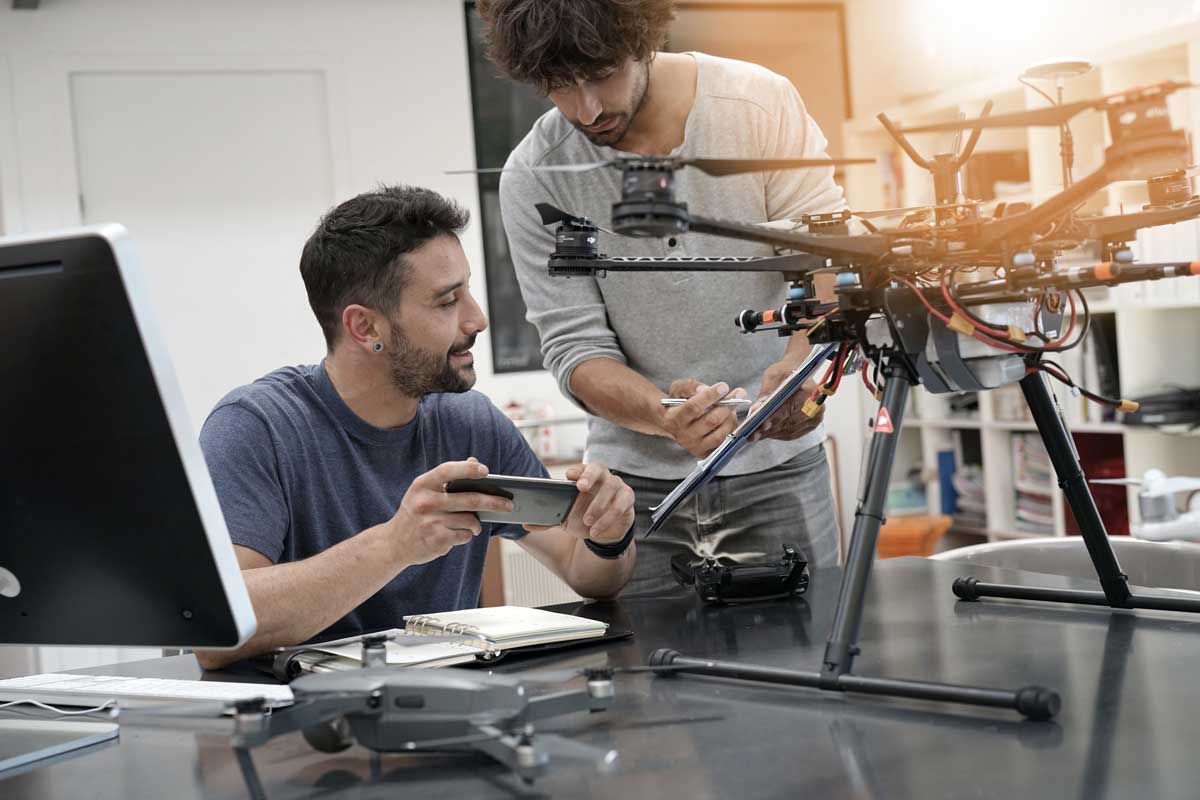Estimated reading time: 3 minutes

DRONE MAINTENANCE
Drones have become an indispensable tool for a wide range of applications, from aerial photography to surveying and search and rescue missions. To harness the full potential of these aerial wonders, maintaining them in top condition is paramount. In this article, we will delve into the importance of drone maintenance and provide comprehensive guidelines for keeping your drone in optimal shape.
The Pre-Flight Inspection Ritual
Maintaining a drone begins with a pre-flight inspection ritual that should be followed before every takeoff. Here’s a detailed breakdown:
1. Visual Inspection:
- Exterior: Examine the drone’s exterior for any visible damage or wear and tear. Pay close attention to the drone’s body, arms, landing gear, and propellers. Look for cracks, dents, or loose parts.
- Propellers: Ensure that all propellers are in good condition and securely fastened. Replace any damaged or worn-out propellers immediately.
2. Cleaning Routine:
- Dust and Debris: Drones often accumulate dust, dirt, and debris during flight. Use a soft cloth or brush to gently clean the drone’s body, propellers, and camera lens.
- Compressed Air: For hard-to-reach areas like motors and crevices, use compressed air to blow out dust and debris. This helps prevent blockages and ensures smooth operation.
3. Battery Health Check:
- Charge Level: Regularly check the battery’s charge level before each flight. Ensure that it’s fully charged and ready for action.
- Battery Condition: Examine the battery for any signs of wear and tear, such as swelling, leakage, or physical damage. If you spot any issues, replace the battery promptly.
4. Firmware Updates:
- Stay Current: Drone manufacturers often release firmware updates to enhance performance and address known issues. Keep your drone’s firmware up to date by regularly checking for and installing updates. This ensures optimal performance and safety.
5. Storage Wisdom:
- Dry and Clean: When your drone is not in use, store it in a clean, dry place. Avoid direct sunlight, as prolonged exposure can damage components. Keep it away from extreme temperatures and humidity, as these conditions can lead to corrosion.
The Professional Touch
While routine pre-flight inspections are essential, professional maintenance is recommended for drones used frequently or for commercial purposes. Here are some additional measures:
1. Sensor Calibration:
- Regular Calibration: Sensors are vital for stable flight and accurate data collection. Regularly calibrate your drone’s sensors as per the manufacturer’s guidelines.
2. Parts Replacement:
- Worn-Out Parts: Over time, certain parts, such as motors, landing gear, or gimbal components, may wear out. Replace these parts promptly to ensure safe and efficient operation.
3. Manufacturer’s Guidelines:
- Compliance: Adhere to the manufacturer’s guidelines for maintenance and servicing. These guidelines are designed to keep your drone in optimal condition.
By following these maintenance tips and integrating them into your drone operation routine, you can ensure that your drone performs reliably and safely, whether it’s capturing breathtaking aerial footage or assisting in critical missions. Remember, a well-maintained drone is not only more efficient but also less prone to unexpected issues that could compromise your flight.



